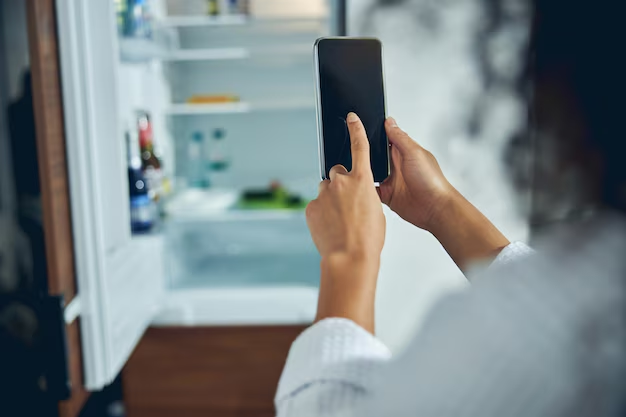Keeping Your Whirlpool Refrigerator Cool: Everything You Need to Know
Imagine arriving home with groceries, only to find that your Whirlpool refrigerator isn't cooling. Panic could set in, but understanding how to turn on the cooling function can quickly alleviate the stress and keep your food fresh. This guide will walk you through the steps to ensure your Whirlpool refrigerator maintains the perfect temperature, while also exploring common issues and troubleshooting tips.
Understanding Whirlpool Refrigerator Cooling
Whirlpool refrigerators are renowned for their reliability and efficiency. Yet, like any complex appliance, understanding the basics of operating and troubleshooting them can be invaluable.
What Makes Whirlpool Refrigerators Unique?
Whirlpool designs its refrigerators with a focus on user-friendly controls and efficient cooling mechanisms. Some of the key features include:
- Adaptive Defrost Technology: Helps conserve energy by defrosting only when necessary.
- Accu-Chill Temperature Management: Quick cooling technology that adapts to the contents of the fridge.
- LED Displays: Many models come with intuitive digital displays for easy control.
Why Would You Need to Turn the Cooling On?
There might be several instances where you would need to manually turn the cooling function on. Some of these situations include:
- Post-Installation: New units might need the cooling function to be initially activated.
- Power Outage Recovery: After a power outage, the cooling system may not automatically restart.
- Faulty Sensor or Settings Reset: If sensors or settings malfunction, manual intervention may be required.
Step-by-Step Guide to Turning On the Cooling Function
Ready to ensure your refrigerator stays cool and your groceries safe? Here's how to activate the cooling:
Before You Start: Preliminary Checks
Before initiating the cooling process, ensure the following:
- Power Supply: Verify that the refrigerator is plugged in and receiving power.
- Controls Panel Status: Check the control panel for signs of life (lights, digital displays).
Activating the Cooling Function
Access Control Panel: Locate the control panel, typically situated on the front of the refrigerator or inside on the fridge walls.
Select Cooling Option:
- On some models, press the dedicated "Cooling" button.
- For others, navigate the digital menu to locate the "Cooling On" option.
Set Desired Temperature:
- Use the panel to adjust settings to the recommended 37°F (3°C) for the refrigerator compartment and 0°F (-18°C) for the freezer.
Confirmation:
- Ensure the display reflects the activated cooling settings.
Listen for Activation:
- After activating, you might hear the motor or compressor beginning its work—a good sign that cooling has been initiated.
Additional Tips for Optimal Cooling
- Allow Time to Stabilize: It may take up to 24 hours for the temperature to stabilize, especially after first-time setup.
- Minimize Frequent Opening: Frequent door opening can impede efficient cooling.
Troubleshooting Common Cooling Problems
Despite following instructions, issues may still arise. Here are some common problems and strategies to troubleshoot them:
Problem 1: Refrigerator Still Not Cooling
- Check Control Settings: Ensure you haven't accidentally set the control to a non-cooling mode, such as "Vacation" or "Sabbath".
- Inspect Door Seals: A compromised seal can lead to inefficiency.
- Look At Vent Blockages: Ensure vents inside the fridge are not blocked by food items.
Problem 2: Irregular Cooling
- Air Circulation: Consistent airflow is key. Make sure items are not restricting the flow.
- Overloading: Too many items can overstress the cooling system.
- Clean Coils: Dirty condenser coils may require cleaning.
Problem 3: Loud Noises or Vibrations
- Leveling Checks: Ensure the refrigerator is on a flat, even surface.
- Internal Obstructions: Look for containers or items rattling against each other.
Enhancing Efficiency for Long-term Use
Maintaining your fridge's efficiency is important for longevity and reliability. Here's how to keep it running optimally:
Regular Maintenance
- Quarterly Cleaning: Dust and clean the back coils regularly.
- Door Seal Checks: Monthly inspections and timely replacements can preserve energy efficiency.
Energy-Saving Habits
- Appropriate Temperature Use: Excessively low temperatures consume more energy.
- Limit Door Openings: Logically organize items to find them quickly.
Monitoring Advanced Features
- Adaptive Defrost Usage: Leverage this feature where possible for energy conservation.
- Utilize Alerts: Some models offer notifications for unusual temperature changes or power outages.
📝 Quick Reference Summary
Need a quick refresh? Here’s a handy checklist to keep your Whirlpool refrigerator in top shape:
- 🔌 Power Check: Ensure it's plugged in and the control panel is functioning.
- ❄️ Cooling Activation: Locate and enable the cooling mode via the control panel.
- 🌡️ Set Temps: Adjust to suggested fridge and freezer settings (37°F and 0°F, respectively).
- ⏳ Allow 24 Hours: Let the system stabilize after activation.
- 🚪 Limit Openings: Keep door access minimal for effective cooling.
- 🔍 Troubleshoot: If issues persist, follow structured troubleshooting.
By following this detailed guide and maintaining regular care of your Whirlpool refrigerator, you can enjoy peace of mind knowing that your appliance is working as it should, consistently protecting your food and maintaining its freshness. Empowered with this knowledge, you can confidently manage and troubleshoot your refrigerator, ensuring a worry-free kitchen environment.
